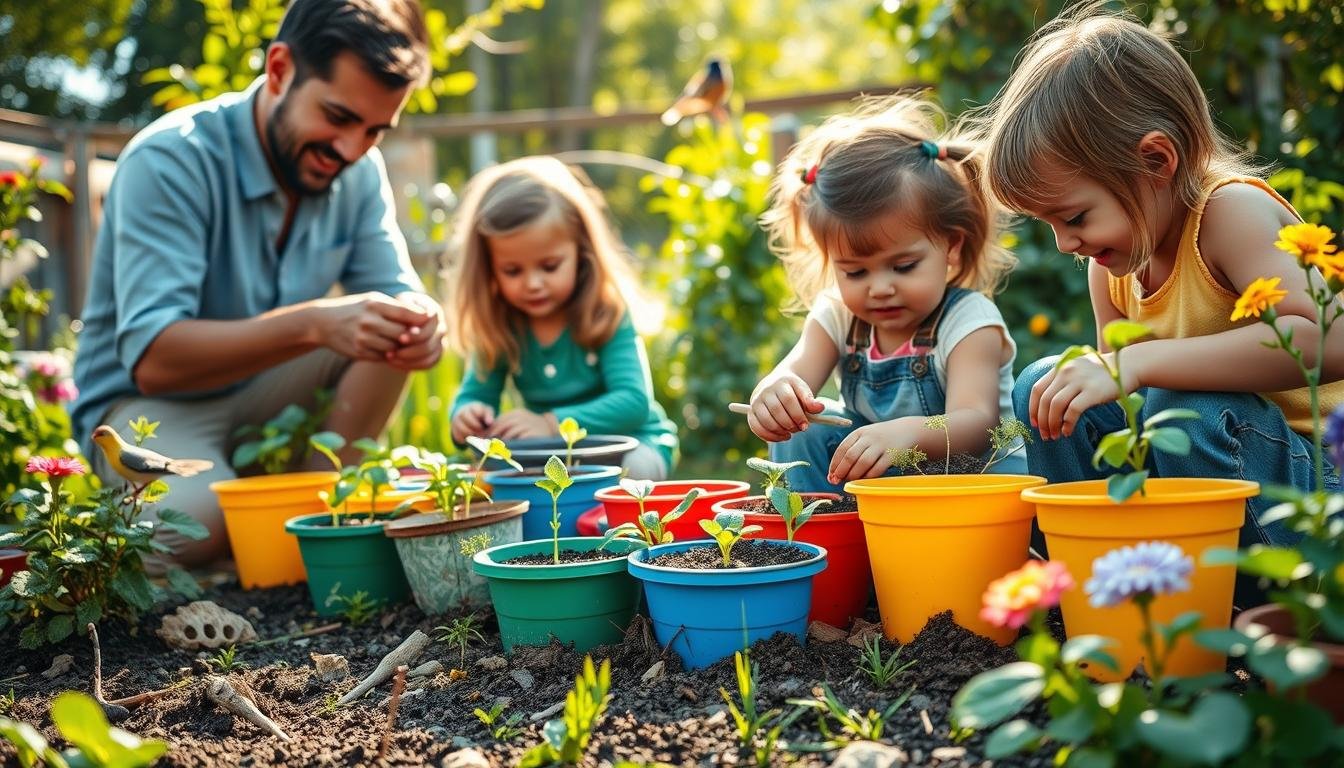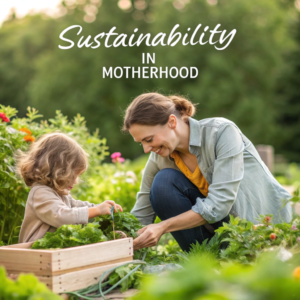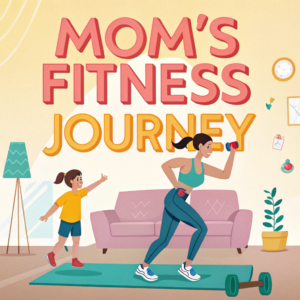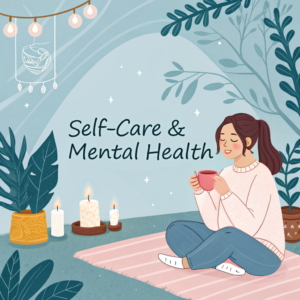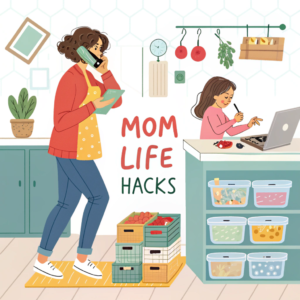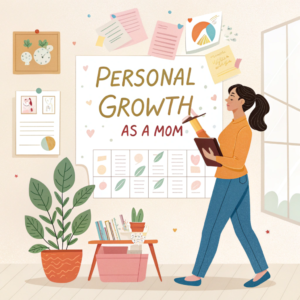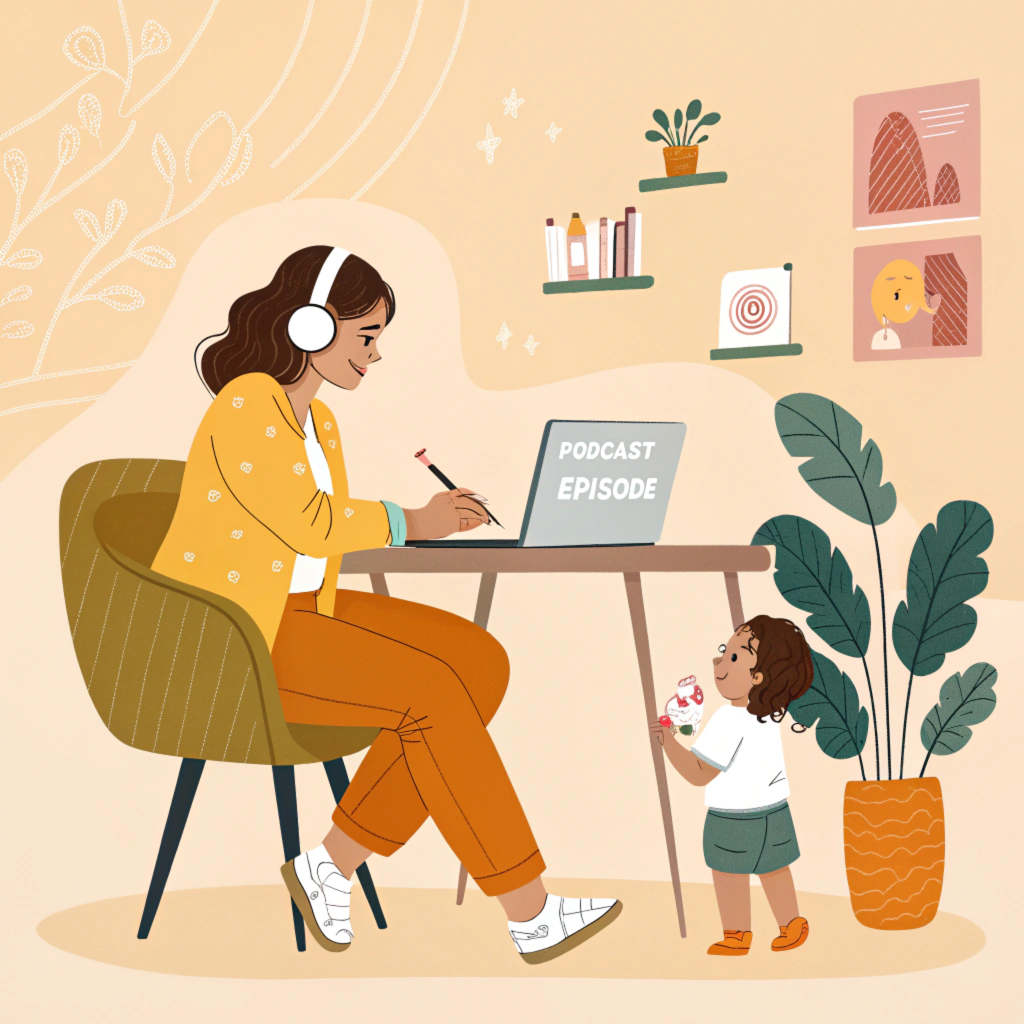Can you raise kids who love the earth? As a parent, you shape how your child sees the world. By teaching them to help with green chores, you teach them to care for the earth. Shannon Brescher Shea, from “Growing Sustainable Together,” shows how to do this.
Getting kids to help with green chores makes them part of the team. Start with easy tasks like recycling and saving water. This way, they learn to love taking care of our planet.
Key Takeaways
- Involving kids in green parenting tasks and sustainable family chores can empower them to develop a sense of responsibility and empathy for the environment.
- Simple tasks such as recycling, composting, and conserving water can be a great way to start.
- Working together as a family can help make eco-friendly habits a family affair.
- Teaching kids about eco-friendly household responsibilities can help them develop a love for the environment.
- Parents can help children take on chores above their apparent abilities by doing the tasks together.
- Encouraging children to explore and engage with nature can reduce fear and instill a love for the environment.
Understanding Green Parenting Tasks and Sustainable Family Chores
As a parent, you shape your child’s values and habits. This includes teaching them about taking care of the environment. By doing green activities every day, you teach your kids to care for the Earth. This helps your family live healthier and more sustainably.
Mats Linder, a Circular Economy expert, says being green saves money and resources. He suggests using second-hand items and reducing waste. Simple changes can make your home more eco-friendly for your family.
What Makes a Household Task Sustainable?
A sustainable task cuts down on waste and saves resources. It also teaches eco-friendly habits. Examples are recycling, composting, and using energy-saving appliances. By doing these tasks with your kids, you teach them to live sustainably.
Benefits of Involving Children in Eco-Friendly Activities
Getting kids involved in green activities is good for many reasons. It teaches them about the environment, teamwork, and responsibility. Some benefits include:
- Developing a sense of responsibility towards the environment
- Promoting teamwork and cooperation
- Encouraging healthy and sustainable habits
- Supporting cognitive development and learning
Age-Appropriate Green Tasks for Kids
Kids can do many green tasks, from recycling to gardening. These activities teach them to care for the Earth. They help kids learn to live sustainably from a young age.
Creating an Eco-Friendly Kitchen Routine
Teaching your kids about green living is key to a sustainable home. In the kitchen, start with simple steps. Use energy-saving bulbs and cut down on food waste.
Shannon Brescher Shea says kids learn a lot by helping in the kitchen. Make a recycling spot and let them help with meal prep. Use safe cleaning products and compostable bags too.
Here are some tasks your kids can do:
- Sorting recyclables
- Wiping surfaces
- Watering plants
- Using compostable trash bags
Getting your kids involved helps them feel responsible and aware of the environment. Make it fun and think about rewards for their help.
| Eco-Friendly Practice | Benefits |
|---|---|
| Using energy-saving light bulbs | Reduces electricity consumption, lasts up to 12 times longer |
| Creating a recycling space | Makes recycling easier, promotes sustainability |
| Using compostable trash bags | Reduces waste, promotes eco-friendly habits |
Setting Up a Family Recycling Station
Starting a recycling station at home is a great way to teach your kids about taking care of the Earth. It helps cut down on waste and shows them the value of recycling. The Environmental Protection Agency (EPA) says only 34.7% of plastic is recycled. This shows we need to recycle more.
Getting your kids involved in recycling teaches them responsibility. Kids as young as 5 and 7 can help sort recyclables. They might even get a small allowance for their help. You can also look into recycling rewards programs, like Recyclebank.com, where kids earn points for recycling.
To make recycling fun, create special recycling bins for your home. You can also give them as gifts to schools or libraries. Encourage your kids to do recycling-themed art, like a mural or chalk art. This can inspire others to recycle too.
Some fun recycling activities include:
- Building a cardboard castle to spark creativity and problem-solving skills
- Turning old clothes into unique outfits to show off creativity and care for the environment
- Starting school recycling projects to teach kids about leadership and responsibility
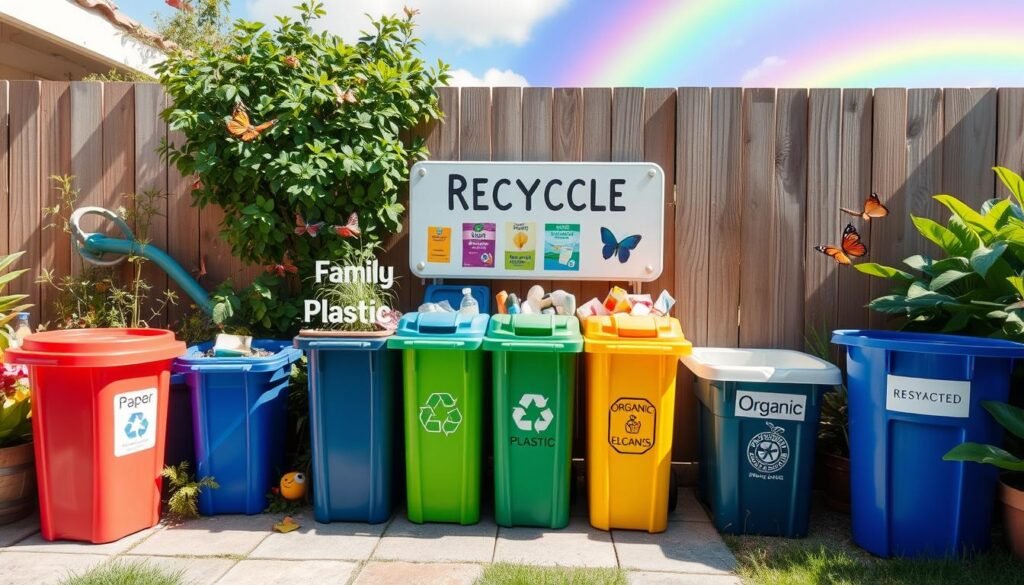
By setting up a recycling station and getting your kids involved, you’re helping create a greener future. Make recycling fun and rewarding. Give your kids chances to learn and grow through recycling and eco-friendly chores.
| Age Group | Recycling Activity |
|---|---|
| 5-7 years | Sorting recyclables from non-recyclables |
| 8-10 years | Creating recycling containers and art projects |
| 11-13 years | Organizing school recycling projects and events |
Water Conservation Activities for the Whole Family
Doing green parenting tasks and sustainable family chores helps us save water. The EPA says taking shorter showers and fixing leaks can really help. This makes our homes more eco-friendly.
Here are some ways to involve the whole family in water conservation activities:
- Take shorter showers and turn off the tap while brushing teeth
- Fix leaks and install low-flow faucets and toilets
- Use a rainwater harvesting system to collect and reuse rainwater
- Use eco-friendly cleaning products that are gentle on the environment
Working together, families can greatly reduce water waste. This teaches kids about green parenting tasks and sustainable family chores. It helps them grow up to care for our planet.
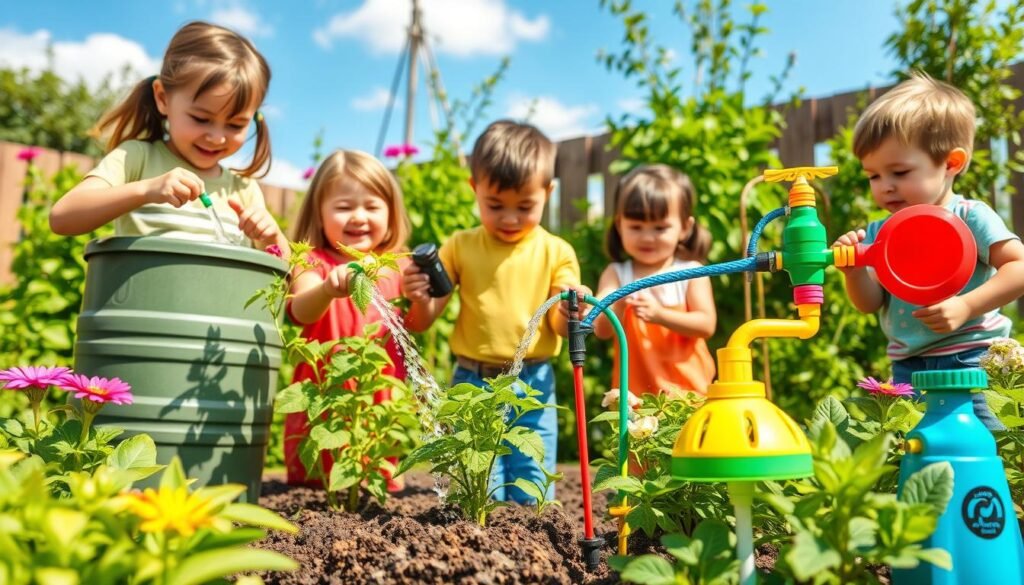
| Activity | Water Savings |
|---|---|
| Take shorter showers | 2.5 gallons per minute |
| Fix leaks | 10 gallons per day |
| Use low-flow faucets | 1.5 gallons per minute |
Growing a Sustainable Garden Together
As a parent, you can teach your kids about taking care of the Earth. Growing a garden together is a great way to do this. It teaches them about growing food and reducing waste. Gardening with kids helps them learn to take care of things.
When starting your garden, think about sunlight, water, soil, and animals. Let your kids help pick the plants. This makes them excited to help. Choose plants that fit your area’s weather and soil.
Some fun activities for kids in the garden include:
- Harvesting and weeding
- Watering and planting seeds
- Composting and creating a garden map
Working together, you can make a garden that gives you food and teaches your kids. Make sure it’s fun for everyone. 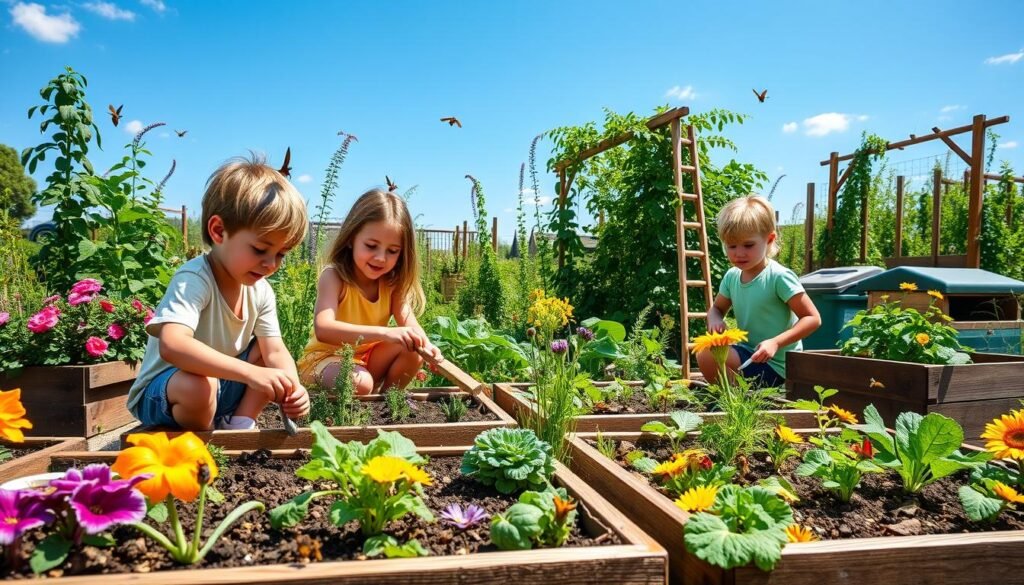
| Age Group | Garden Chores |
|---|---|
| 3-5 years | Harvesting, weeding, watering |
| 6-12 years | Planting seeds, creating a garden map, composting |
| 13+ years | Maintaining compost piles, assisting in preservation efforts |
By following these tips, you can make a garden that’s good for your family and the Earth. It’s a great way to teach your kids about caring for the planet. Plus, it’s fun to do together.
Energy-Saving Tasks Your Children Can Master
As a parent, you help shape your child’s view on eco-friendly household tasks and green living activities for families. By teaching your kids to save energy, you help the planet and your family. The DOE says teaching kids about saving energy is good for them and the planet.
Some tasks your kids can learn include:
- Turning off lights, electronics, and appliances when not in use
- Using energy-efficient light bulbs and devices
- Helping with laundry and using cold water for washing
By getting your kids involved, you teach them to save energy. This helps the planet and teaches them important skills and responsibility.
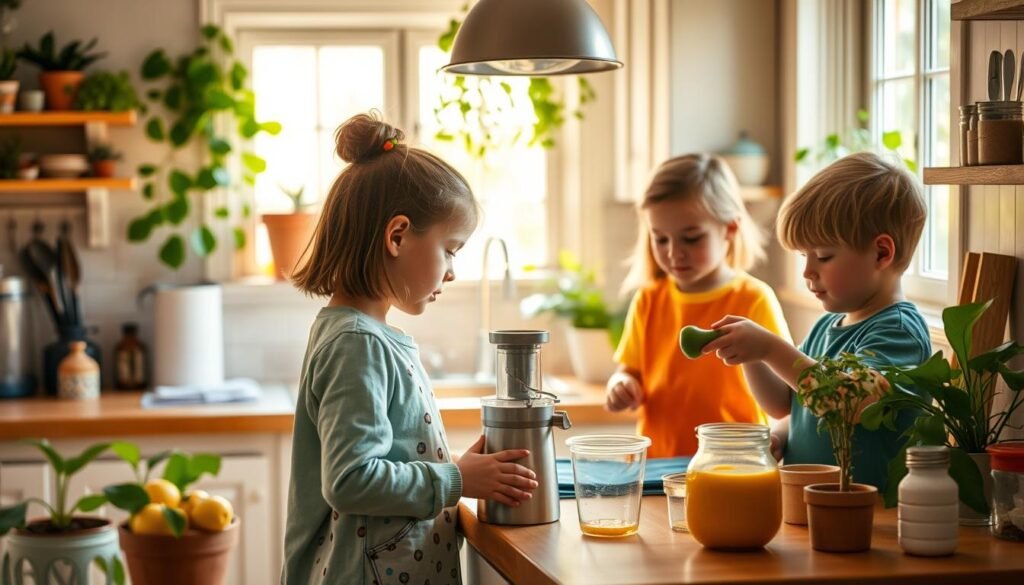
Every small action is important. Working together as a family can make a big difference. You can help reduce energy waste and teach your kids about eco-friendly household tasks and green living activities for families.
| Energy-Saving Task | Benefits |
|---|---|
| Turning off lights and electronics | Reduces energy consumption and prolongs device lifespan |
| Using energy-efficient light bulbs | Lowers energy bills and minimizes environmental impact |
Sustainable Cleaning and Organization Projects
As a parent, you want to teach your kids about taking care of the planet. You can do this by getting them involved in cleaning and organizing. Mats Linder says this helps reduce waste and teaches kids to be responsible.
Start by making a list of tasks like cleaning the kitchen or organizing the playroom. Then, give each task to a family member, including your kids. This way, everyone helps and learns together.
Natural Cleaning Solutions
Using natural cleaners is good for the planet. You can make your own with vinegar and baking soda. It’s a chance to teach your kids about using natural stuff instead of harsh chemicals.
Decluttering and Donating
Decluttering and donating is key to keeping things tidy and helping others. Encourage your kids to sort through their toys and clothes. Teach them to donate what’s good but no longer needed. This helps them understand the value of giving and reducing waste.
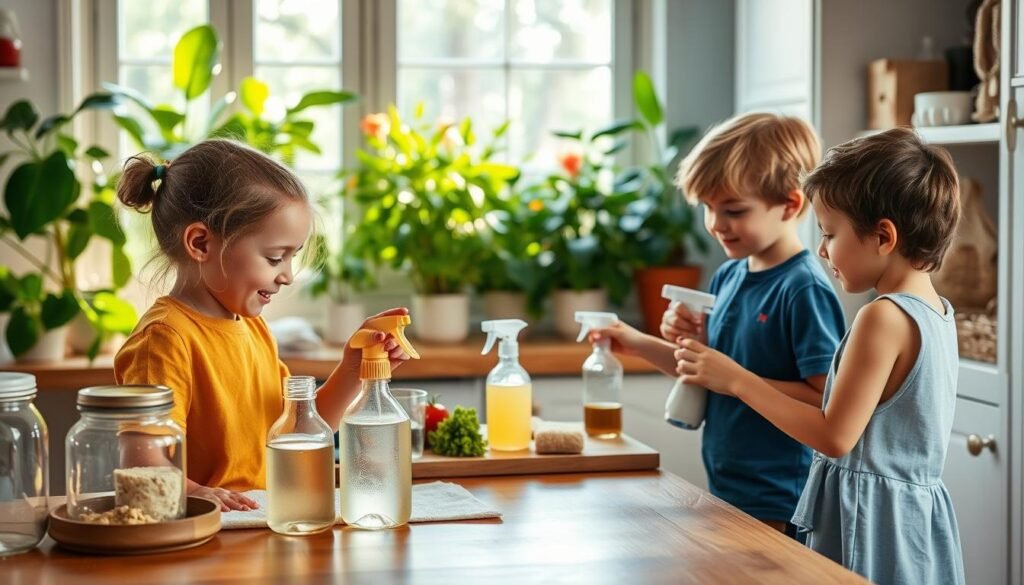
Upcycling Activities
Upcycling is fun and teaches kids to think creatively. You can turn old jars into planters or make a bird feeder from recycled stuff. It shows them how to find new uses for old things.
| Activity | Materials Needed | Benefits |
|---|---|---|
| Natural Cleaning Solutions | Vinegar, baking soda | Reduces waste, promotes sustainability |
| Decluttering and Donating | None | Teaches kids the value of giving back, reduces waste |
| Upcycling Activities | Old jars, recycled materials | Promotes creativity, reduces waste |
By doing these projects, you teach your kids about taking care of the planet. Make it fun and let them help at every step. This way, they learn important lessons about being eco-friendly.
Teaching Kids About Sustainable Shopping
As a parent, you shape your child’s view on living green. Teaching them about shopping in a green way is key. By getting them involved, they learn to help the planet through fun activities.
Start by making shopping lists together. This helps kids think about their choices and how they affect the earth. Choosing items with less packaging is also important. The EPA says it helps a lot.
Understanding Packaging Impact
It’s important for kids to know how packaging affects the earth. Explain how using less plastic and biodegradable packaging helps. This teaches them the value of taking care of our planet.
Here are some ways to encourage green shopping:
- Encourage kids to use reusable bags for groceries
- Choose items with less packaging
- Go for biodegradable or recyclable stuff
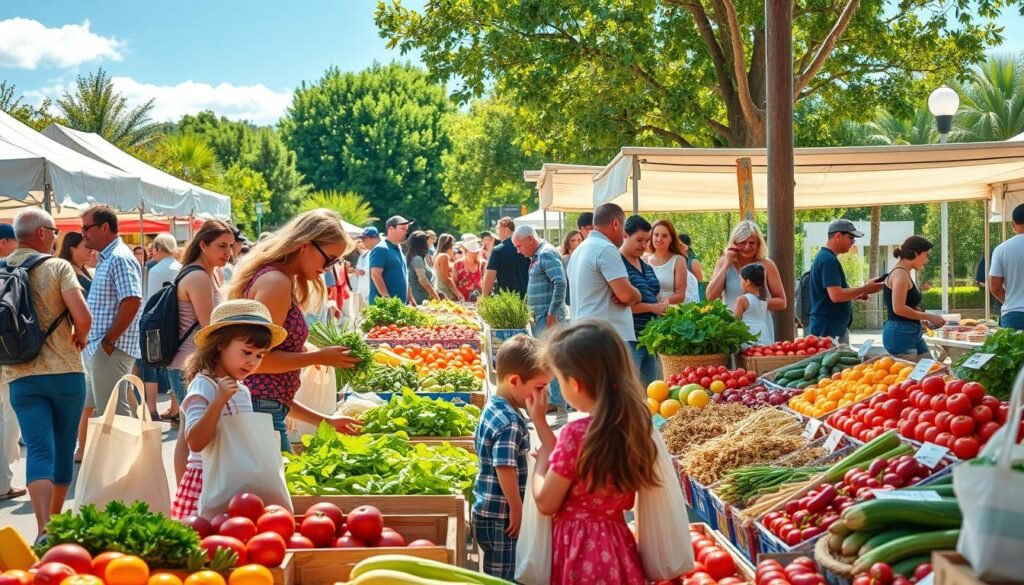
Teaching kids about green shopping helps them learn to care for the earth. Every little bit helps, and together we can make a big difference.
| Product | Environmental Impact | Sustainable Alternative |
|---|---|---|
| Plastic water bottles | Contributes to plastic waste and pollution | Reusable water bottles |
| Single-use plastic bags | Harms marine life and contributes to waste | Reusable shopping bags |
| Products with excessive packaging | Increases waste and pollution | Products with minimal or biodegradable packaging |
Outdoor Environmental Activities for Families
Doing outdoor activities is great for families to live green. The National Park Service says it helps kids feel responsible. It also teaches them about sustainability.
Fun activities like hiking, camping, and gardening are good. They keep kids healthy and teach them about caring for the earth. Parents can teach kids why it’s important to protect our planet.
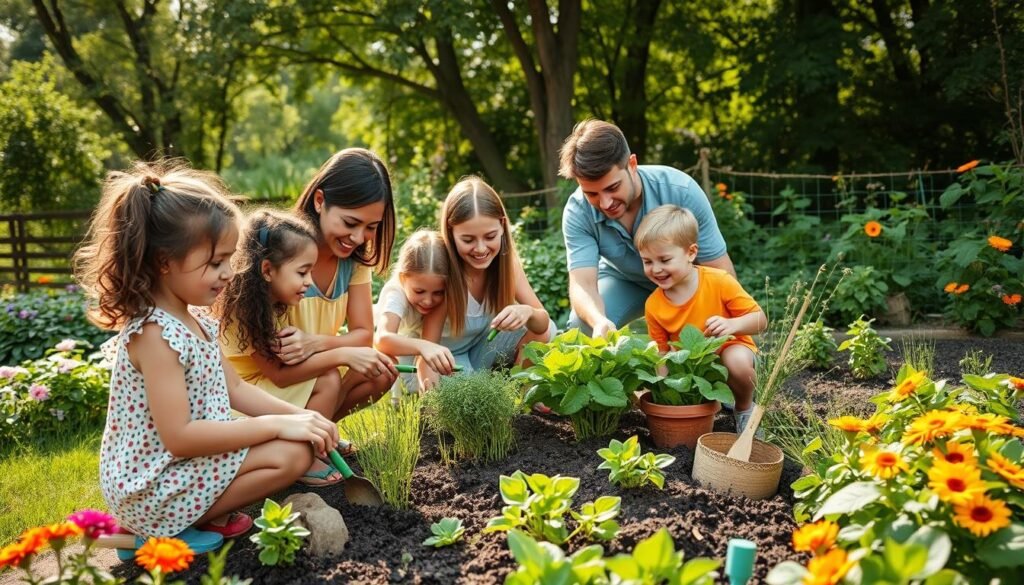
Outdoor fun can also teach kids about not wasting things. Families can help clean up parks or start recycling. This way, they can help the planet and teach kids to live green.
Other fun things families can do include:
- Planting trees or starting a community garden
- Participating in park clean-up initiatives
- Starting a recycling program in their community
- Creating a backyard wildlife habitat
These activities help families live green. They teach kids about taking care of the earth and being responsible.
Conclusion: Building a Sustainable Future Through Family Engagement
Learning about green parenting tasks and sustainable family chores is key. It helps make your home more eco-friendly and future-proof. By getting your kids involved, you teach them important skills and help them love the planet.
Studies show that recycling and saving energy can cut down carbon emissions by 25% a year. Saving water can save up to 6,945 gallons a year. More people are using reusable items, like water bottles and bags, too.
Teaching kids to garden can really help. It’s made 40% of homes grow their own food. Kids who play outside learn to care for the earth more, by 27%. Families working together on green projects do more eco-friendly things, by 15%.
The journey to a green future starts at home. By doing green parenting tasks and sustainable family chores every day, you help the planet. And you teach your kids to protect it. Let’s make a better tomorrow, together, one green home at a time.
FAQ
What are green parenting tasks and sustainable family chores?
Green parenting tasks and sustainable family chores are eco-friendly activities. They involve kids in keeping a home green. These tasks teach kids to care for the planet and lower your family’s carbon footprint.
How can involving my kids in eco-friendly activities benefit them?
Eco-friendly activities teach kids important skills like responsibility and problem-solving. They also help kids love the environment more. Plus, it’s a great way to bond with your family and learn about living green.
What are some examples of age-appropriate green tasks for kids?
Kids can help with recycling, composting, and saving water. They can also garden and help save energy. You can pick tasks that fit their age and skills.
How can I set up a family recycling station and make it fun for my kids?
Create a recycling spot in your home with bins for different items. Teach your kids how to sort correctly. Make it fun by giving rewards or turning it into a game.
What are some water conservation activities the whole family can do?
Your family can save water by fixing leaks and taking shorter showers. Turn off the faucet while brushing teeth. Use water-saving appliances. Let your kids help track water use and find ways to waste less.
How can I teach my kids about sustainable shopping practices?
Teach your kids about green shopping by making lists together. Talk about how products affect the environment. Encourage them to pick eco-friendly items. Explain the importance of packaging and how to choose wisely.
What are the benefits of building a sustainable future through family engagement?
By doing green tasks together, you lower your home’s impact on the planet. You also teach your kids valuable skills and a love for nature. This teamwork builds a better future and creates special memories for your family.

